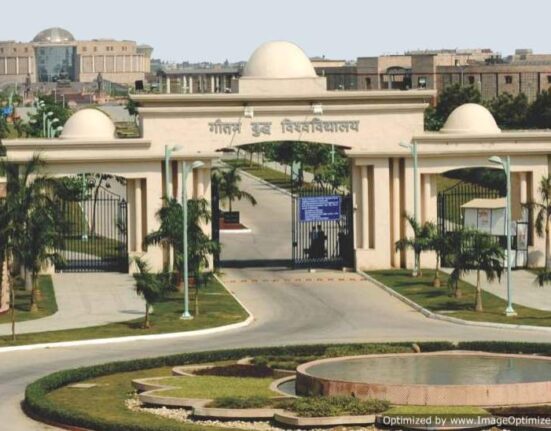Izmat Anis Shaikh : Agnel School of Law: Corruption Hampers India’s Development
INTRODUCTION
Economies that are afflicted by a high level of corruption—which involves the misuse of power in the form of money or authority to achieve certain goals in illegal, dishonest, or unfair ways—are not capable of prospering as fully as those with a low level of corruption. Corrupted economies are not able to function properly because corruption prevents the natural laws of the economy from functioning freely. As a result, corruption in a nation’s political and economic operations causes its entire society to suffer.
KEY TAKEAWAYS
Countries that have a high level of corruption are unable to function efficiently or prosper at an economic level, causing suffering for society as a whole.
Emerging market economies tend to have much higher corruption levels compared to developed countries.
Corruption can lead to an uneven distribution of wealth as small businesses face unfair competition from large companies that have established illegal connections with government officials.
In a corrupt economy, resources are inefficiently allocated and companies that otherwise would not be qualified to win government contracts are often awarded projects as a result of bribery or kickbacks.
The quality of education and healthcare also deteriorates under a corrupt economy, leading to an overall lower standard of living for the country’s citizens.
Data on Corruption’s Impact
According to the World Bank, the average income in countries with a high level of corruption is about a third of that of countries with a low level of corruption. Also, the infant mortality rate in such countries is about three times higher and the literacy rate is 25% lower. No country has been able to completely eliminate corruption, but studies show that the level of corruption in countries with emerging market economies is much higher than it is in developed countries.
The map below illustrates the varying levels of corruption perception in 2016 in different countries. The darker colors represent higher levels of corruption perception and lighter colors represent lower levels. Based on this map, we see the regions with developed economies—North America, Western Europe, and Australia—have low levels of corruption perception. In contrast, a high perception of corruption is reported in almost all countries with emerging economies.
High Prices for Low Quality
Corruption in the way deals are made, contracts are awarded, or economic operations are carried out, leads to monopolies or oligopolies in the economy. Those business owners who can use their connections or money to bribe government officials can manipulate policies and market mechanisms to ensure they are the sole provider of goods or services in the market.
Monopolists, because they do not have to compete against alternative providers, tend to keep their prices high and are not compelled to improve the quality of goods or services they provide by market forces that would have been in operation if they had significant competition. Embedded in those high prices are also the illegal costs of the corrupt transactions that were necessary to create such a monopoly. If, for example, a home construction company had to pay bribes to officials to be granted licenses for operations, these costs incurred will, of course, be reflected in artificially high housing prices.
Inefficiently Allocated Resources
In best practice, companies choose their suppliers via tender processes (requests for tender or requests for proposal), which serve as mechanisms to enable the selection of suppliers offering the best combination of price and quality. This ensures the efficient allocation of resources. In corrupted economies, the companies that otherwise would not be qualified to win the tenders are often awarded projects as a result of unfair or illegal tenders (e.g. tenders that involve kickbacks).
This results in excessive expenditure in the execution of projects and substandard or failed projects, leading to overall inefficiency in the use of resources. Public procurement is perhaps most vulnerable to fraud and corruption due to the large size of financial flows involved. It’s estimated that in most countries, public procurement constitutes between 15% and 30% of gross domestic product (GDP).
Uneven Distribution of Wealth
Corrupted economies are characterized by a disproportionately small middle class and significant divergence between the living standards of the upper class and lower class. Because most of the country’s capital is aggregated in the hands of oligarchs or persons who back corrupted public officials, most of the created wealth also flows to these individuals.
In a corrupt economy, small businesses are not widely spread and are usually discouraged because they face unfair competition and illegal pressures by large companies that are connected with government officials. Certain industries are more prone to corruption than others, making small businesses in these sectors even more vulnerable to unethical business practices.
Low Stimulus for Innovation
Because little confidence can be placed in the legal system of corrupted economies in which legal judgments can be rigged, potential innovators cannot be certain their invention will be protected by patents and not copied by those who know they can get away with it by bribing the authorities. There is thus a disincentive for innovation, and as a result, emerging countries are usually the importers of technology because such technology is not created within their own societies.
A Shadow Economy Exists
Small businesses in corrupt countries tend to avoid having their businesses officially registered with tax authorities to avoid taxation. As a result, the income generated by many businesses exists outside the official economy, and thus are not subject to state taxation or included in the calculation of the country’s GDP.
Another negative of shadow businesses is they usually pay their employees decreased wages, lower than the minimum amount designated by the government. Also, they do not provide acceptable working conditions, including appropriate health insurance benefits for employees.
Low Foreign Investment and Trade
Corruption is one of the disincentives for foreign investment. Investors who seek a fair, competitive business environment will avoid investing in countries where there is a high level of corruption. While investing in emerging markets remains a popular investment area, investors are naturally hesitant to put their money at risk in countries known to have high corruption levels. Studies show a direct link between the level of corruption in a country and measurements of the competitiveness of its business environment.
Poor Education and Healthcare
A working paper of the International Monetary Fund (IMF) shows corruption has an adverse impact on the quality of education and healthcare provided in countries with emerging economies. Corruption increases the cost of education in countries where bribery and connections play an important role in the recruitment and promotion of teachers. As a result, the quality of education decreases and this affects the overall health of the economy.
Also, corruption in the designation of healthcare providers and recruitment of personnel, as well as the procurement of medical supplies and equipment, in emerging economies results in inadequate healthcare treatment and a substandard or restricted, medical supply, lowering the overall quality of healthcare.
The Bottom Line: Corruption Hampers India’s Development
Many countries with emerging economies suffer from a high level of corruption that slows their overall development. The entire society is affected as a result of the inefficient allocation of resources, the presence of a shadow economy, and low-quality education and healthcare. Corruption thus makes these societies worse off and lowers the living standards of most of their populations.
Corruption in India is an issue that affects the economy of central, state, and local government agencies in many ways. Not only has it held the economy back from reaching new heights, but rampant corruption has stunted the country’s development.[1] A study conducted by Transparency International in 2005 recorded that more than 62% of Indians had at some point or another paid a bribe to a public official to get a job done. In 2008, another report showed that about 50% of Indians had first-hand experience of paying bribes or using contacts to get services performed by public offices, however, in 2019 their Corruption Perceptions Index ranked the country 80th place out of 180, reflecting a steady decline in the perception of corruption among people.
The largest contributors to corruption are entitlement programs and social spending schemes enacted by the Indian government. Examples include the Mahatma Gandhi National Rural Employment Guarantee Act and the National Rural Health Mission. Other areas of corruption include India’s trucking industry which is forced to pay billions of rupees in bribes annually to numerous regulatory and police stops on interstate highways.
The media has widely published allegations of corrupt Indian citizens stashing millions of rupees in Swiss banks. Swiss authorities denied these allegations, which were later proven in 2015–2016.
The causes of corruption in India include excessive regulations, complicated tax and licensing systems, numerous government departments with opaque bureaucracy and discretionary powers, monopoly of government-controlled institutions on certain goods and services delivery, and the lack of transparent laws and processes. There are significant variations in the level of corruption and in the government’s efforts to reduce corruption across different areas of India.
| State | 1990–95 | 1996–00 | 2001–05 | 2006–10 |
| Bihar | 0.41 | 0.30 | 0.43 | 0.88 |
| Gujarat | 0.48 | 0.57 | 0.64 | 0.69 |
| Andhra Pradesh | 0.53 | 0.73 | 0.55 | 0.61 |
| Punjab | 0.32 | 0.46 | 0.46 | 0.60 |
| Jammu & Kashmir | 0.13 | 0.32 | 0.17 | 0.40 |
| Haryana | 0.33 | 0.60 | 0.31 | 0.37 |
| Himachal Pradesh | 0.26 | 0.14 | 0.23 | 0.35 |
| Tamil Nadu | 0.19 | 0.20 | 0.24 | 0.29 |
| Madhya Pradesh | 0.23 | 0.22 | 0.31 | 0.29 |
| Karnataka | 0.24 | 0.19 | 0.20 | 0.29 |
| Rajasthan | 0.27 | 0.23 | 0.26 | 0.27 |
| Kerala | 0.16 | 0.20 | 0.22 | 0.27 |
| Maharashtra | 0.45 | 0.29 | 0.27 | 0.26 |
| Uttar Pradesh | 0.11 | 0.11 | 0.16 | 0.21 |
| Odisha | 0.22 | 0.16 | 0.15 | 0.19 |
| Assam | 0.21 | 0.02 | 0.14 | 0.17 |
| West Bengal | 0.11 | 0.08 | 0.03 | 0.01 |
Impact of corruption
Loss of credibility
In a study on bribery and corruption in India conducted in 2013 by global professional services firm Ernst & Young (EY), a majority of the survey respondents from PE firms said that a company operating in a sector which is perceived as highly corrupt may lose ground when it comes to fair valuation of its business, as investors bargain hard and factor in the cost of corruption at the time of transaction.
According to a report by KPMG, “high-level corruption and scams are now threatening to derail the country’s its credibility and [its] economic boom”.[91]
Economic loss
Corruption may lead to further bureaucratic delay and inefficiency if corrupted bureaucrats introduce red tape in order to extort more bribes. Such inadequacies in institutional efficiency could affect growth indirectly by lowering the private marginal product of capital and investment rate. Levine and Renelt showed that the investment rate is a robust determinant of economic growth.
Bureaucratic inefficiency also affects growth directly through the misallocation of investments in the economy. Additionally, corruption results in lower economic growth for a given level of income.
Lower corruption, higher growth rates
# Corruption Hampers India’s Development Corruption Hampers India’s Development Corruption Hampers India’s Development







Leave feedback about this